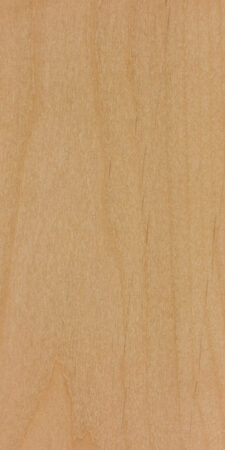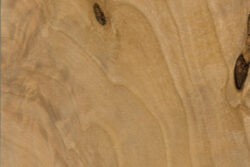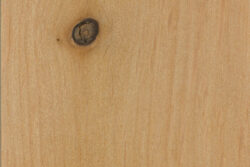Common Name(s): Alder, aliso
Distribution: Primarily temperate regions of the Northern Hemisphere
Genus Size: Around 50 species (with nearly 200 additional species names treated as synonyms)
Mechanical Characteristics: Wood is generally of low to medium weight for a hardwood, with relatively soft wood. Alder species have good dimensional stability, workability, and finishing properties.
Visual Characteristics: Alder species look very similar, and feature heartwood that’s light tan to reddish brown, darkening with age. There is no visible distinction between heartwood and sapwood. Large aggregate rays appear as occasional small streaks on the face grain that can be mistaken for defects in the wood.
Identification: The defining characteristic of Alnus species is its large, very sporadically occurring aggregate rays. On the face grain of the wood, the rays may be mistaken for occasional defects in the wood. With the exception of oak species (Quercus genus), alder stands as one of the few temperate species in the northern hemisphere that has aggregate rays.
Comments: The two largest and most commercially significant tree species of the genus are Alnus rubra of North America and A. glutinosa of Europe. Both are harvested domestically for lumber, and yield comparable wood. There are dozens of less-common or less-used species, nearly all of which occur in temperate areas of the Northern Hemisphere. One exception is A. acuminata, growing as far south as Argentina, and once thought to be a subspecies of Mexican alder (A. jorulensis).
One curious fact about alder is that although it has poor rot resistance when subjected to wet-dry cycles in direct soil conditions, it holds up very well in conditions of continuous submergence. Alder wood is sometimes used for marine piles and supports. Most notably, European alder (Alnus glutinosa) has been used in submerged applications throughout the city of Venice, Italy.
Related Content:










